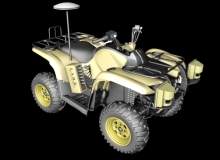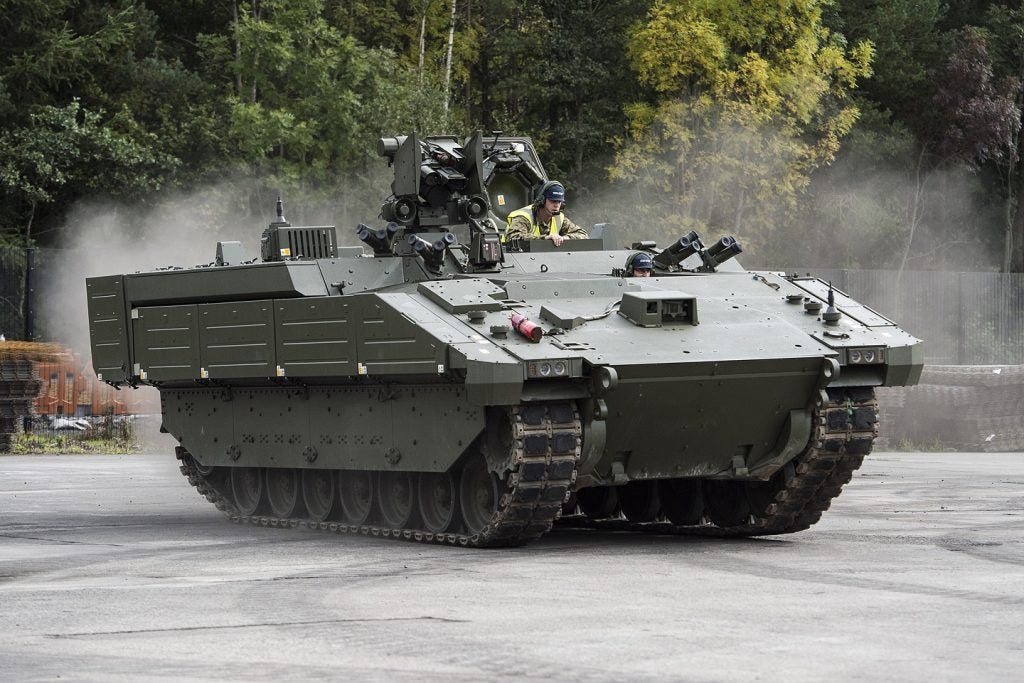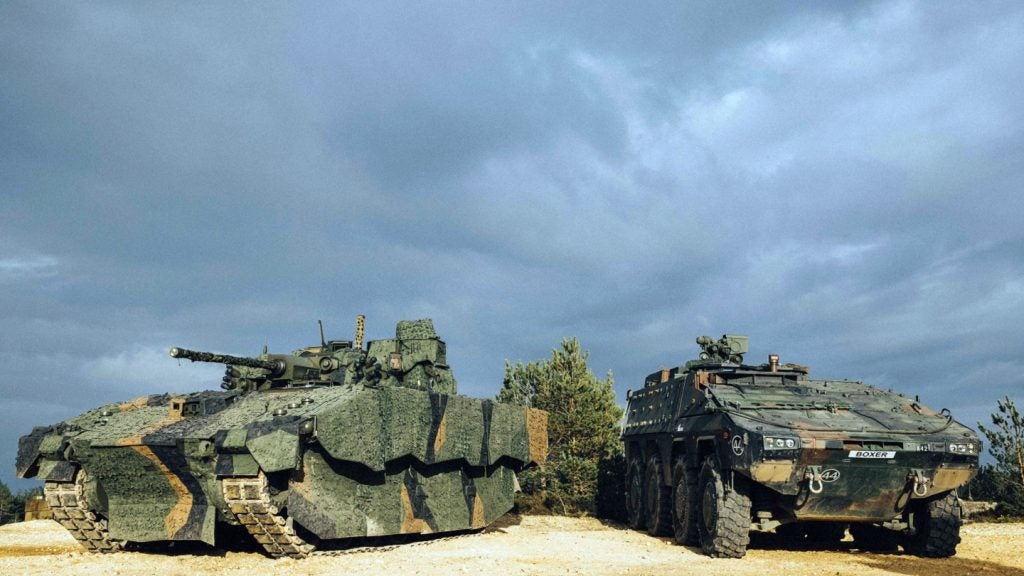
Aggressive defence cuts, differing combat environments and technological advancements have placed new and emerging expectations on the capabilities of military vehicles. The demands placed upon today’s vehicles are shaping the design of vehicles still in development, and this year’s Defence & Security Equipment International (DSEi) exhibition, held in London, UK, provided defence contractors with the platform to demonstrate just what they have to offer for tomorrow’s military vehicle of choice.
Blending into the background
Using BAE’s Adaptiv technology, a vehicle can be covered in a ‘skin’ of hexagonal panels that, using an undisclosed technology, can change temperature at a rapid rate. This allows the vehicle to adapt to the temperature of its surroundings, rendering the vehicle invisible to infrared or thermal imaging. Alternatively, the cells can copy the heat signature of other vehicles, or even animals, in order to mislead enemy combatants. Added to this, the cells can capture images of the surroundings and project the background scenery, helping the vehicle to blend into the background.
The hexagonal panels can also be hardened, providing an armour plating capability that has been absent from previously cloaking technologies. Developed in Sweden by BAE, in cooperation with the Swedish Defence Material Administration (FMV), this particular adaptation manages to succeed where others have failed due to a comparatively low energy consumption and adequate armour plating capability, due to the robustness of the cells.
Tests carried out with a CV90 tank fitted with the system have concluded that the technology is most effective at distances between 300m and 400m, although smaller or larger panels could be fitted onboard smaller or larger vehicles to produce similar results.
See Also:
BAE believes that the technology could be ready for production within two years. FMV project leader Peder Sjolund also backed the vehicle, adding: "Our panels can be made so strong that they provide useful armour protection and consume relatively low levels of electricity, especially when the vehicle is at rest in ‘stealth recce’ mode and generator output is low."
How well do you really know your competitors?
Access the most comprehensive Company Profiles on the market, powered by GlobalData. Save hours of research. Gain competitive edge.

Thank you!
Your download email will arrive shortly
Not ready to buy yet? Download a free sample
We are confident about the unique quality of our Company Profiles. However, we want you to make the most beneficial decision for your business, so we offer a free sample that you can download by submitting the below form
By GlobalDataOperating autonomously
BAE also used DSEi to unveil its new Land Autonomy Reference Kit (LARK), which it says can offer varying levels of autonomy to vehicles. The kit, which can be fitted onto almost any land vehicle currently in operation, is capable of adapting and converting a vehicle to act completely autonomously through the adaptation of various sensors and processors.
Developed by BAE’s Advanced Technology Centre, the kit combines a ‘brain box’, which includes the system’s processing power and algorithms, with a tailored sensor suite and an operator interface in order to transform the vehicle into a programmable, autonomous platform.
While retaining its capabilities of standard function, various levels of autonomy can be programmed into the vehicle – ranging from remote operation using an interface to waypoint following on a predetermined route and through to complete autonomous action. Additional sensors and software can be added in order to allow the vehicle to operate throughout GPS-restricted locations.
Possible uses that BAE has vaunted for the development include transforming vehicles to act as ‘mules’ for carrying supplies or equipment, or even providing armed forces with a means of evacuating personnel from dangerous scenarios without endangering lives of other soldiers.
Mine detection
Also present at the exhibition was Husky’s second generation vehicle-mounted mine detection vehicle, which includes several upgrades over its predecessor.
The latest variant includes a sophisticated, high-sensitivity low metal content detector, accompanied by alternative sensors such as ground-penetrating radar. The hi-sense pulse induction metal detection system has been designed in response to the emerging threat of sophisticated improvised explosive devices witnessed in combat zones like Afghanistan and Iraq. As the IED threat evolves, so does the technology with which they are constructed – an increasing amount of devices are now constructed with low amounts of metal and are dug deeper in order to avoid detection.
The technology induces more energy into the terrain in order to detect objects at greater depths, and improvements have also been made to the signal-to-noise ratio of the reflected wave. Digital filtering has also seen a marked improvement, enabling the system to be used more effectively with the alternator on. The alterations made have resulted in a 30% improvement in efficacy over the pulse induction system.
The vehicle’s protection has also been ramped-up, retaining its ‘V’ angle hull to deflect blasts but with the added protection provided by bolt-on ceramic tile armour plates. The increased mass has led to a new 550mm-wide overpass tire to be developed, allowing the vehicle to achieve a 12.5 psi mean ground pressure.
Special vehicles for special prices
Iveco Defence Vehicles was also busy at DSEi, exhibiting the new version of its successful light multirole vehicle (LMV), designed especially for use in special forces operations following expressions of interest from the special force units of several countries.
The special forces variant differs from the traditional LMV in terms of its ballistic protection, which has been reduced to only include a light anti-mine plate in order to maximise payload and capability whereas slight changes have been made to the onboard weaponry. Four smoke grenade launchers are attached to the front of the vehicle with a pivot mount for a 7.62mm MG for the vehicle commander.
Although the variant is currently under evaluation by Special Forces from a number of countries, a larger ring mount capable of supporting a gunner platform is currently under development. Fitted onto the vehicle’s roll bar is a mount for the mean support weapon, capable of accepting a 12.7mm MG or 40mm AGL which is collapsible for transport.
Transport capabilities are an important consideration for the design of the special forces LMV, with transportability inside a CH 47 Chinook helicopter integral to the vehicle. This has been resolved with the addition of a foldable-roll bar concept that is currently in the design stages, and a vehicle solution with a width less than 1.98m has been identified.






